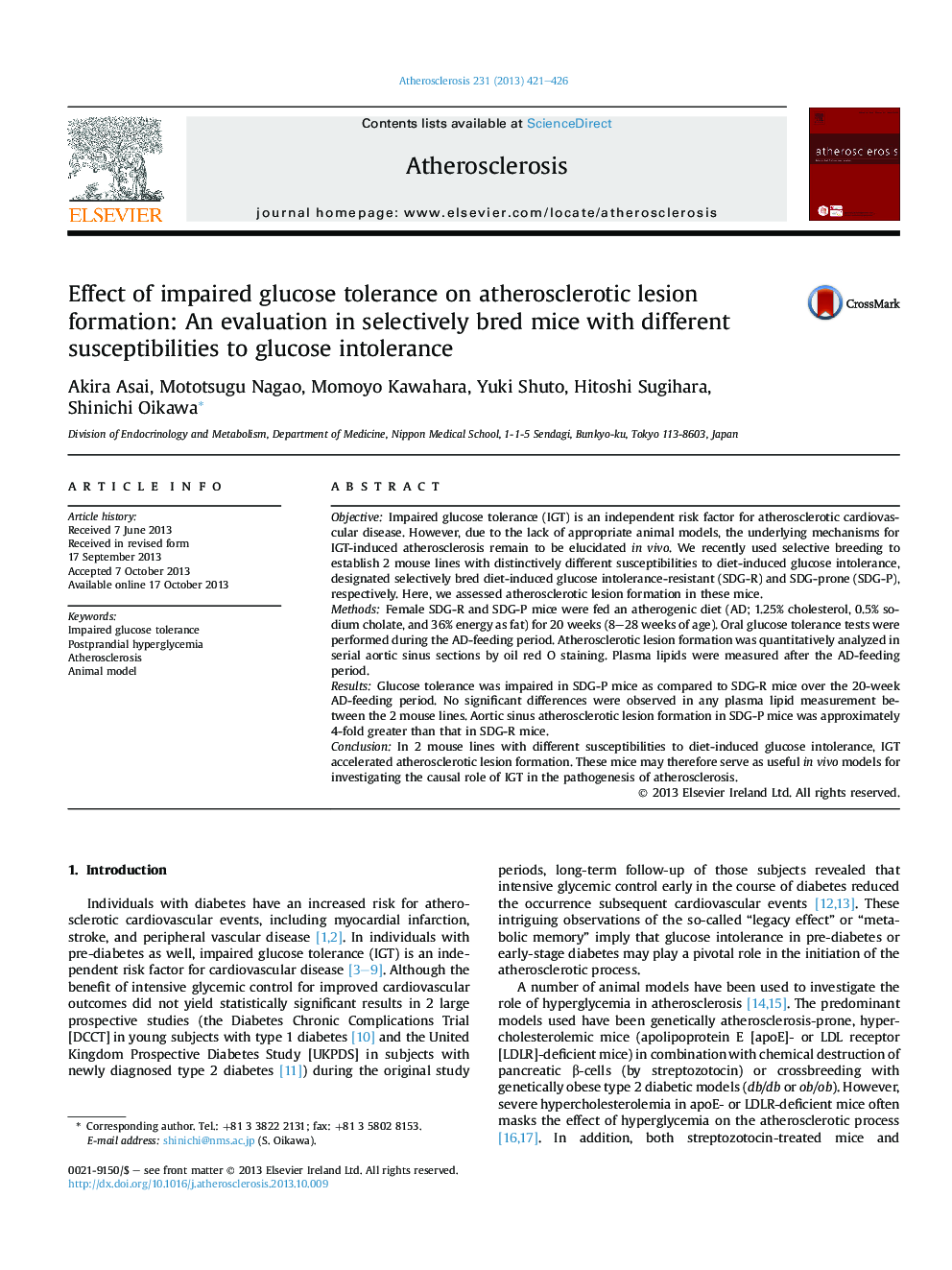| کد مقاله | کد نشریه | سال انتشار | مقاله انگلیسی | نسخه تمام متن |
|---|---|---|---|---|
| 5946343 | 1172358 | 2013 | 6 صفحه PDF | دانلود رایگان |
- Glucose tolerance was impaired in SDG-P mice as compared with SDG-R mice.
- No significant differences were observed in plasma lipids between the two mouse lines.
- SDG-P mice showed 4-fold greater atherosclerotic lesion formation than SDG-R mice.
ObjectiveImpaired glucose tolerance (IGT) is an independent risk factor for atherosclerotic cardiovascular disease. However, due to the lack of appropriate animal models, the underlying mechanisms for IGT-induced atherosclerosis remain to be elucidated in vivo. We recently used selective breeding to establish 2 mouse lines with distinctively different susceptibilities to diet-induced glucose intolerance, designated selectively bred diet-induced glucose intolerance-resistant (SDG-R) and SDG-prone (SDG-P), respectively. Here, we assessed atherosclerotic lesion formation in these mice.MethodsFemale SDG-R and SDG-P mice were fed an atherogenic diet (AD; 1.25% cholesterol, 0.5% sodium cholate, and 36% energy as fat) for 20 weeks (8-28 weeks of age). Oral glucose tolerance tests were performed during the AD-feeding period. Atherosclerotic lesion formation was quantitatively analyzed in serial aortic sinus sections by oil red O staining. Plasma lipids were measured after the AD-feeding period.ResultsGlucose tolerance was impaired in SDG-P mice as compared to SDG-R mice over the 20-week AD-feeding period. No significant differences were observed in any plasma lipid measurement between the 2 mouse lines. Aortic sinus atherosclerotic lesion formation in SDG-P mice was approximately 4-fold greater than that in SDG-R mice.ConclusionIn 2 mouse lines with different susceptibilities to diet-induced glucose intolerance, IGT accelerated atherosclerotic lesion formation. These mice may therefore serve as useful in vivo models for investigating the causal role of IGT in the pathogenesis of atherosclerosis.
Journal: Atherosclerosis - Volume 231, Issue 2, December 2013, Pages 421-426
